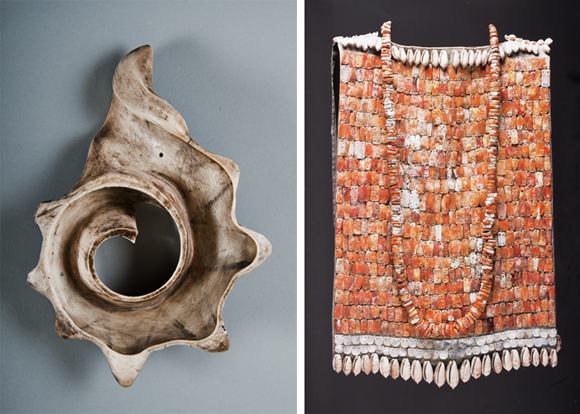
By the mid-thirteenth century, political power had become less centralized in the southern Mexican highlands. Scores of independent royal houses produced extraordinary, finely crafted jewelry, polychrome ceramics, textiles, and featherwork. These luxury goods were exchanged as gifts to strengthen strategic alliances. Royal courts engaged in fiercely competitive gift-giving in order to enhance their position in political networks. The greater one’s ability to acquire exotic materials and craft them into exquisite artworks, the better one could negotiate favorable marriages, and thereby achieve a higher status among neighboring communities.
Trade routes facilitated the spread of the International Style and continued to unite far-flung independent states. From the Yucatan Peninsula to the Pacific Coast and the American Southwest, communities exchanged precious materials such as turquoise and shell for other elite commodities like rare plumage and cacao.
Feasting, Divination, and Heroic History The Aztec Conquest and the Spanish Incursion
Image Left: Cut-shell Pectoral, Mexico, Veracruz, Pánuco, Huastec, AD 1200-1521, Shell, Museo Nacional de Antropología, Mexico City (10-9831), photo © Museum Associates/LACMA, by Jorge Pérez de Lara
Image Right: Tunic, Tula, Pyramid B, Toltec, AD 900-1200, Spondylus and olivella shell, Centro INAH, Hidalgo (10-5689940/2), photo © CNCA-INAH Museo Nacional de Antropología, Mexico City, by Ignacio Hernandez Guevara